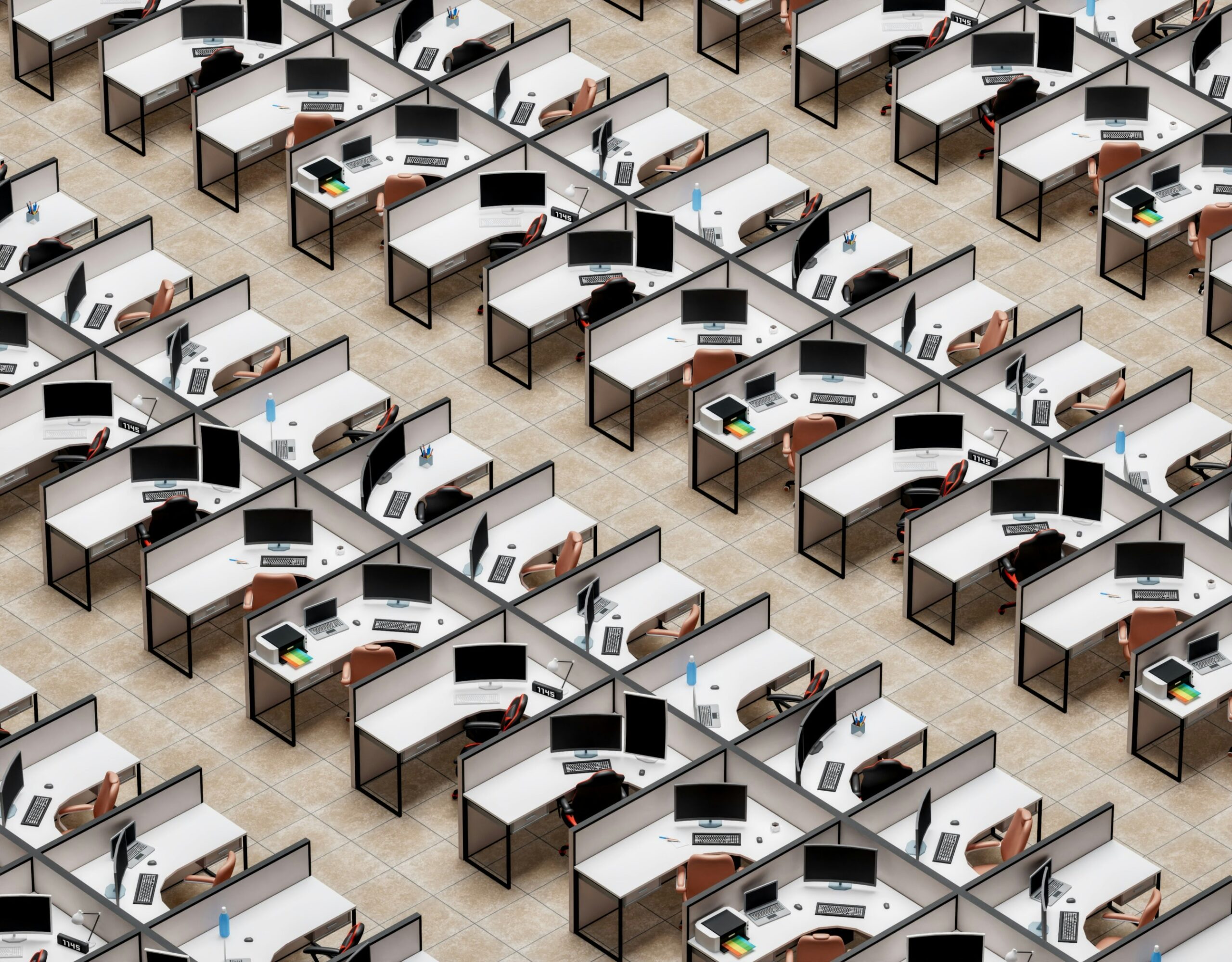How does workplace design impact employee mood? Or, better yet, who would want to work 40 hours a week in a space that increases stress and stunts creativity? We’ll let you in on a secret, nobody does.
As workplace experts, we know that intentionally designed workplaces can lift spirits and encourage creativity, while a poorly designed space can do just the opposite leading to decreased productivity.
So, how do we make our workplace one that inspires creativity and motivation? Here are some tips on how to design with employee mood in mind.
- Natural Lighting
Natural light can be one of the most impactful elements in workplace design. It may seem simple, but natural light can result in better sleep, improved mood, and increased focus ultimately leading to better mood. Sunlight regulates our natural circadian rhythms, affecting employee energy and stress levels. Positioning desks next to windows is a simple but effective way to achieve this perk.
- Third Spaces
What can be classified as a third space and why are they needed? Think of informal zones between the desks, meeting rooms, employee lounges, coffee bars, or quiet areas. Third spaces provide employees with a place to recharge and disconnect when work becomes overwhelming. Areas such as lounges, breakout rooms, or coffee bars add a human touch to the office and decrease overall stress.
- Areas of Play
Shuffleboard tables, putting greens, and hidden lounges aren’t just for employee appeal, they serve as a place for connection. Fun spaces can reduce stress levels and boost company morale while keeping employees engaged. The time spent engaging in fun areas can encourage cross-department interaction, resulting in a break of company silos and building deeper connections.
- Greenery
Plants bring life to a space with fresh air circulation and provide a visual response that boosts mood. Incorporating plants into design has been linked to reducing anxiety while increasing focus. Something as simple as adding a plant in the corner of a room can change the overall tone, making a room feel more inviting and serene.
- Color Analysis
Did you know that all colors have psychological effects, whether you realize it or not? Warm tones, such as yellow, red, and orange, can activate creativity, while cool tones, such as blue, purple, and green can promote serenity and focus. Using color psychology in design can look like making a collaborative space orange (to promote creativity and energy) and using a muted purple for a focus room (to promote concentration and relaxation). It’s also important to note that colors such as bright white can be overstimulating in areas that require employees to focus for long periods.
- Quiet Rooms
If your office is primarily open, it’s important to provide areas that promote quiet focus and are free of distractions. They give employees a retreat when taking an important call or discussing sensitive topics. These areas don’t have to be spacious, they can look like phone-booth-style nooks or small meeting rooms with good acoustic insulations.
- Flexible Work Zones
Providing a combination of different work zones can give employees autonomy and provide decisions on how and where they work. When employees can easily switch up scenery and ambiance, it can help with productivity levels, whereas being stuck to one desk may stunt creativity. Every employee has a unique working style, so providing flexible work zones can be pivotal in employee success.
When employees feel encouraged in their environment, they show up to work more motivated. The physical space employees spend 40 hours a week, plays a major role in their overall emotional well-being. At NewGround, we use a data-driven approach to design that will help your employees thrive and your business grow. Learn more about the work we are doing at www.newground.com.
